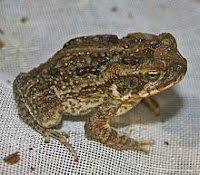The red tilapia is known in Thai language as Pla Thap-thim, meaning "pomegranate fish". This type of tilapia is very popular in Thai cuisine where it is prepared in a variety of ways. Today I will share this recipe for Spicy, Crispy Red Tilapia Salad, know in the Thai language as Larb Pla Thap-thim.
Ingredients :
- 2 red tilapia fillets,
- 1 shallot , finely sliced
- 1 tsp chili powder
- 1 tbsp roasted ground rice power
- 1 green onion, chopped
- 1 tbsp coriander
- ½ cup mint leaves
- 2-3 tbsp lemon juice
- 1 tbsp fish sauce
Preparation:
- Steam the red tilapia fillets and pat dry.
- Place the steamed fillets on a cutting board and, using 2 forks, break up the fish into very small pieces.
- Heat oil in a wok or skillet on medium low heat and deep fry the fish until golden brown. It takes a few minutes to brown all the pieces to be very crispy.
- Drain the cooked fish on paper towel and set aside.
- In a medium bowl mix together the chopped shallot, chili powder, roasted ground rice power, chopped green onion, coriander, lemon juice, and fish sauce.
- Add cooked fish and gently mix together until all fish is coated. The cooked fish should still be crispy while serving.
- Immediately serve the spicy red tilapia salad mixture with mint leaves and fried shallots.








